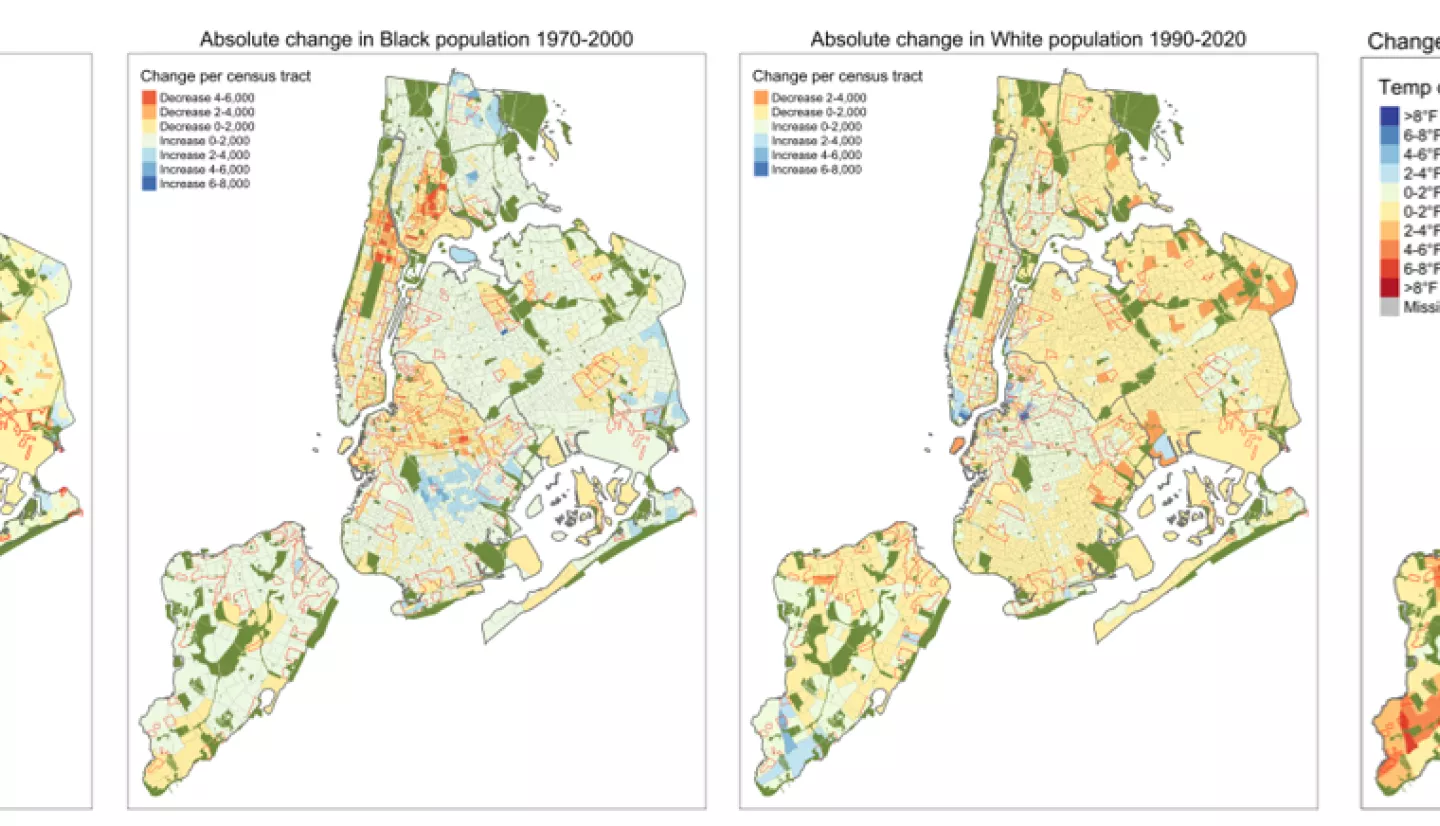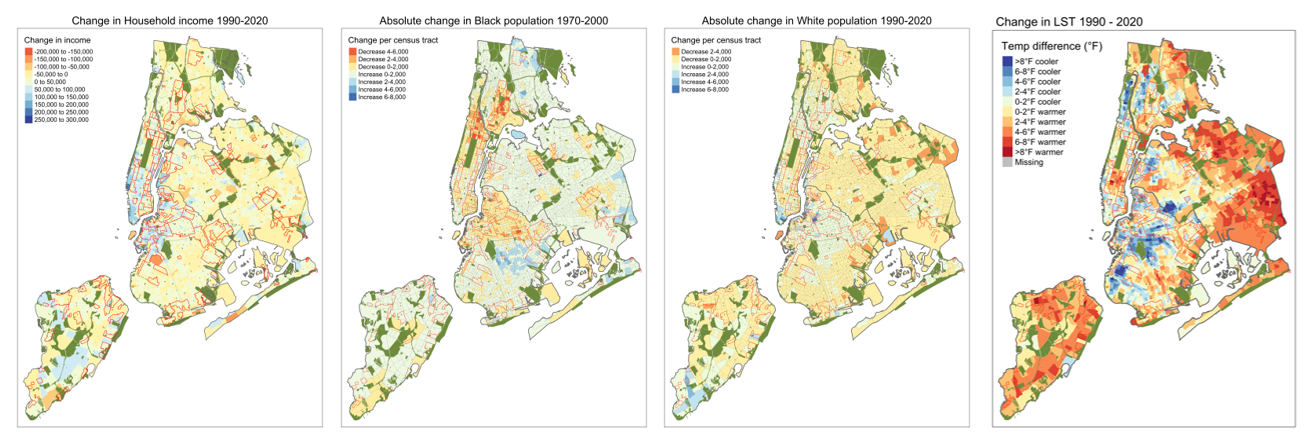Spatial and temporal variations in land surface temperature, vegetation and socioeconomic and health characteristics in frontline EEJ neighborhoods in New York City: Integrating Scientific Study with Community Perspectives
Team: Dr. Peter J. Marcotullio (Hunter College, CUNY), Dr. Andrew Reinmann (Advanced Science Research Center/Hunter College, CUNY), Dr. Mehdi Heris (Hunter College, CUNY). Janice Barnes (Adaptation Partners), Graduate students - Gowri Anand (Hunter College, CUNY) and Andrew Kittredge (Hunter College, CUNY)
Executive Summary: This landscape project proposes a historical accounting of the relationship between land surface temperature (LST), normalized difference vegetation index (NDVI), greening and climate-related policies and socio-economic change in different neighborhoods in New York City. Neighborhoods are defined by the Home-Owners Loan Corporation (HOLC) distinctions at the census tract level in New York City. We will examine temporal and spatial relationships from 1984 to 2023 to associate changes in LST, greening and climate-related policies and socio-economic and health change in frontline equity and environmental justice (EEJ) neighborhoods. A major goal of the project is to identify the information useful for integrating community perspectives in the analysis.

